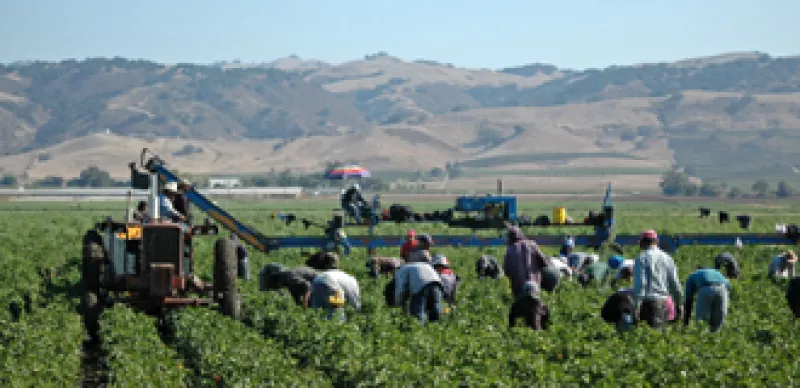People have to eat. It’s this simple fact that sold Dixon Boardman of Optima Fund Management on his newest venture: investing in U.S. farmland. The founder of the $4.5 billion alternative investment firm is banking that after 2008’s economic fallout, investors are on the lookout for uncomplicated, nonleveraged, inflation-resistant options that will remain sound through economic storms. He believes farmland offers them just that.
The seeds, as it were, of Boardman’s project were planted in March 2009, during a dinner conversation with real estate scion Harrison LeFrak, who observed that farmland had appealing returns. The National Council of Real Estate Investment Fiduciaries Farmland Index has in fact yielded an annualized 13.57 percent over the ten years ended December 31, 2009.
It didn’t take Boardman long to rack up reasons farmland looked to be a solid bet: Demand for food is increasing, thanks to a world population expected to grow from 6.8 billion to 7.6 billion in 2020. Farmland investing hasn’t been, as Boardman puts it, “Wall Streeted,” so it doesn’t correlate with stocks and bonds. It is a hedge against inflation (“It’s like gold with a yield,” he explains). And perhaps most attractive of all, farmland is a familiar, graspable hard asset — a comforting thought after trillions of dollars in derivatives losses.
“It’s the most primary, basic thing — people have to eat,” Boardman says. “Plus, a stock price can go to zero, and provided you haven’t borrowed money for the farmland, it’s always going to have some value. In this uncertain world, where would you rather invest?”
So, under the Optima umbrella, he and his high-profile partners in the venture — the LeFrak family; William von Mueffling, founder of Cantillon Capital Management; and the Fanjul family, owners of Florida Crystals Corp., a West Palm Beach, Florida–based sugar company — formed a real estate investment trust and named it American Farmland Co.
The fund closed at the end of March with $100 million under management, $20 million of which was the partners’ own capital. Boardman says his list of initial investors reads like a “Who’s Who in very smart money.”
Optima has teamed with Prudential Agricultural Investments, a unit of Prudential Mortgage Capital Co., which will act as the experts in finding farmland to purchase and lease back to farmers.
“We don’t envision ourselves as bankers with pinstripes and Wellington boots,” Boardman says. “We are experts in finding great managers.” So he’s surrounded himself with people who do tend to wear Wellies. American Farmland’s advisory board, for instance, includes Mark Wilkinson, a retired senior vice president of agricultural investment for Prudential, who grew up on a farm, earned a degree in agriculture from Purdue University and owns his own farm. Wilkinson says the fund will construct its portfolio with an eye to diversity, from citrus groves in the Southeast to soybeans in the Midwest to cotton and rice in the Mississippi Delta.
Money managers looking to do something similar are thin on the ground. Shonda Warner, formerly a grain trader at Cargill and a derivatives trader at Goldman Sachs & Co., launched Full Harvest Agricultural Opportunities Fund I (advised by her firm, Chess Ag Full Harvest Partners) in 2007, and today it runs about $50 million. Warner’s concise theory for why there hasn’t been more interest in farmland: “It’s not sexy. No one thinks of 10 percent as an attractive return.” But she says wary investors are now being drawn to safety.
One reservation investors have is farmland’s lack of liquidity. Boardman aims to address this by making American Farmland the first publicly traded farmland REIT. “If someone needs liquidity, this is not for them,” says Boardman, “but eventually I hope that — no pun intended here — investors will be able to have their cake and eat it too.”






